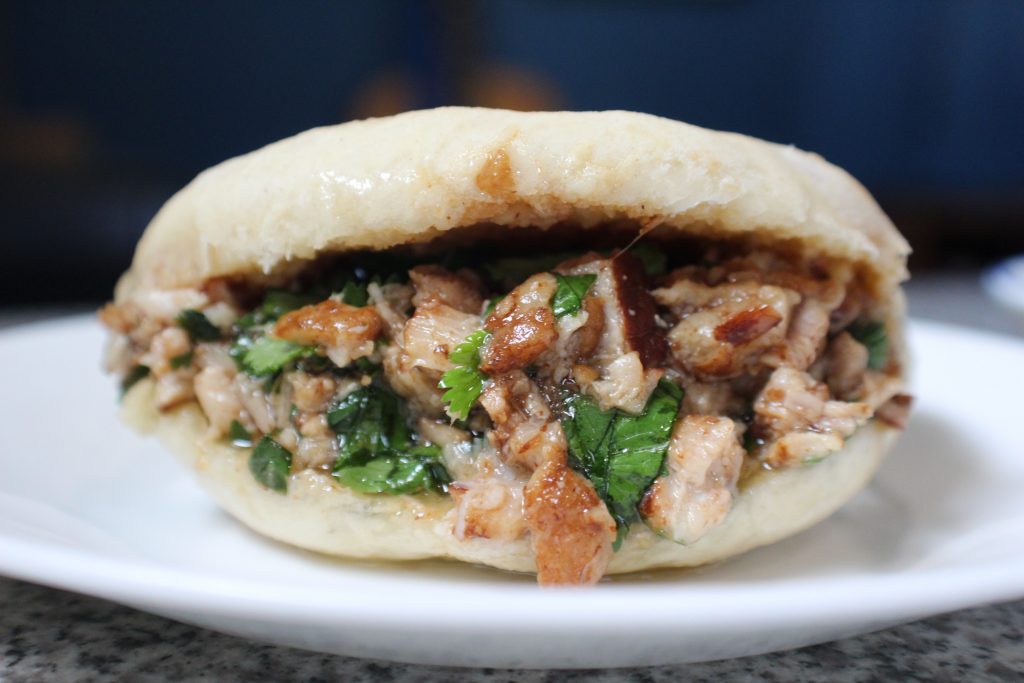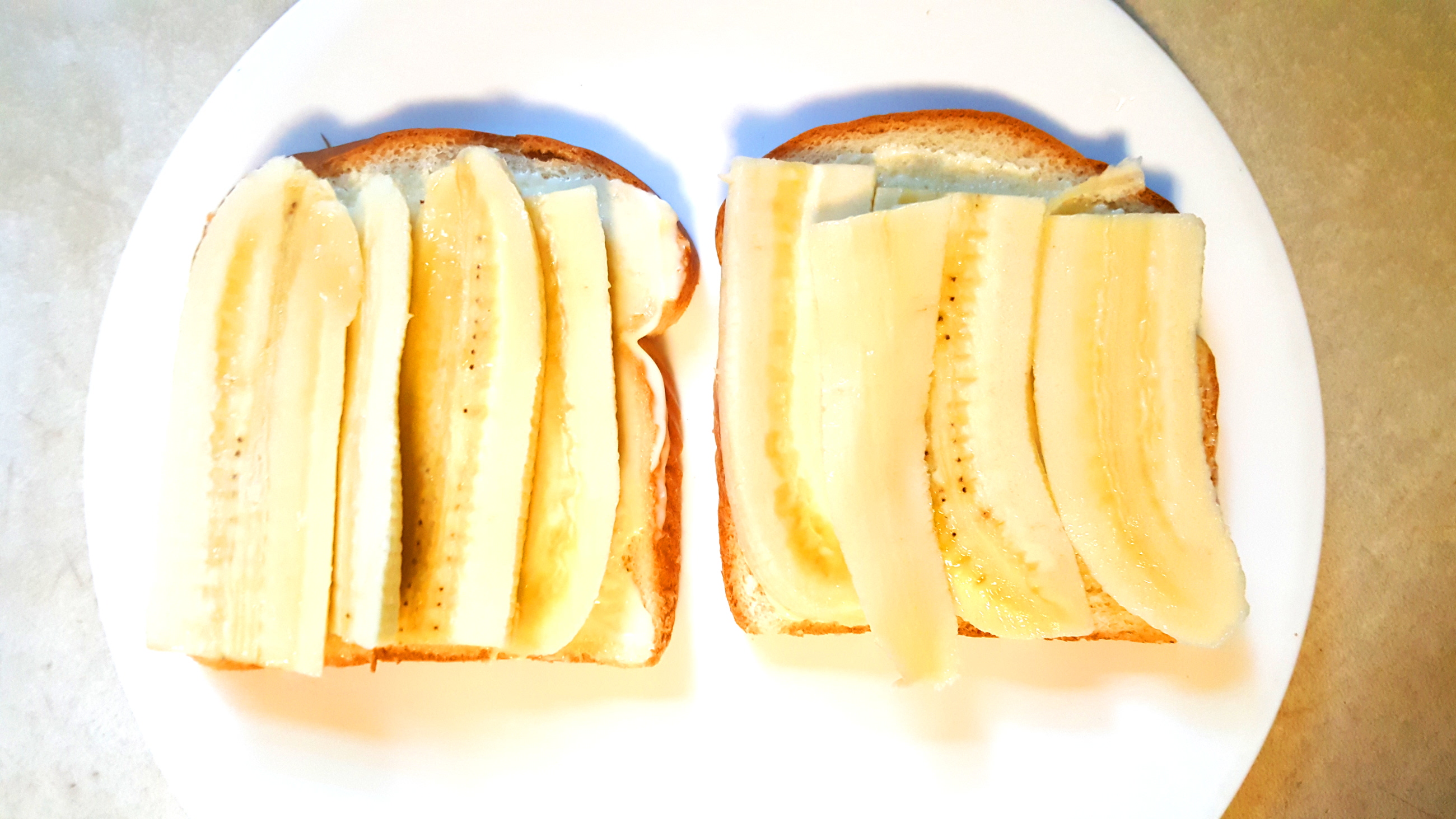Rou Jia Mo, the Flatbread Sandwich of Shaanxi Province
Shaanxi is the southeastern-most province of “xi bei” or Northwestern China, occupying the geographic center of the country. It was the seat of 14 Chinese dynasties, the home of the Terracotta Army, and the cradle of Chinese civilization. Its situation as the eastern terminus of the Northern Silk Road, one of the ancient trade routes linking Eastern Asia with the Middle East and Europe; its position between the meat-and-wheat cuisine of northern provinces like Inner Mongolia and the pungent, spicy cuisine of southern provinces like Sichuan; and its geographical features including mountain and valley, a fertile plateau and a northern desert have resulted in a cuisine featuring less seafood but more lamb, pork and beef; less rice but more wheat; thick noodles and rich gravies; spices and herbs from both east and west.
Rou jia mo is a sandwich combining two of Shaanxi’s ancient culinary treasures. La zhi rou, or pork belly braised in soy sauce, rice wine, and numerous spices, dates back to those Zhou Dynasty days, a period that began roughly 3000 years ago and lasted for around 800 years. Bai ji mo, a wheat flatbread baked in clay ovens (or more often these days griddled), dates to the subsequent short-lived Qin Dynasty. This is when the combination of the two, Rou jia mo (meat in a bun) is said to have originated as well, though written records show the sandwich being popularized during the later Tang Dynasty around 1400 years ago. In any case, Rou jia mo may be the most ancient sandwich we will cover on the Tribunal.
Xi’an Cuisine, a restaurant in Chicago’s Chinatown named after Shaanxi’s most populous city, offers several varieties of flatbread sandwiches including pork, beef, lamb, and a vegetarian version. On a recent visit, I ordered all 6 varieties. Our waiter asked if I was sure I could eat that much. I did… eventually.
- Vegetarian flatbread at Xi’an Cuisine
- Pork flatbread at Xi’an Cuisine
- Pork elbow flatbread at Xi’an Cuisine
- Cumin lamb flatbread at Xi’an Cuisine
- Beef flatbread at Xi’an Cuisine
- Cumin beef flatbread at Xi’an Cuisine
According to the waiter, who came back around to ask me how the sandwiches were and which I liked the best, the cumin lamb flatbread is their most popular menu item. It was good–minced lamb spiced with cumin, a flavor representative of a lot of Northern Chinese cuisine. But my favorites were the pork elbow, slices of cartilaginous pork with a unique texture, flavored with Sichuan chili oil, and the vegetarian version, featuring tofu skin noodles, seaweed, thinly julienned carrots and hot peppers. Both sandwiches presented a variety of textures and flavors that set them apart from the others, though the pork, sliced beef, and beef with cumin were all great and also worth trying. Still, I had to take most of them home to finish later. The pork elbow and vegetarian flatbreads were devoured on the spot.
I was disappointed though that the pork didn’t wow me the way I’d expected. It was good but I’d read accounts of the rou jia mo using twenty to thirty different spices and master stocks, braising liquids reused over and over for years, building and building in flavor. The sandwich should be intensely flavored, deeply savory yet delicate, with layers of flavor and the multiple textures of braised pork belly.
I was going to have to make it myself.
A website called The Woks of Life provided the recipe for both pork and bun that appealed most to me, though I enhanced the pork by adding a few more spices (cloves, dried chilies) and by using mushroom broth in place of some of the water. Most of the spices I already had but I bought black cardamom at the local Indian market and drove to a half dozen Asian markets before finding galangal.
Like many braised or stewed dishes, I’d read that the pork would fare better being reheated the day after cooking so despite our kitchen smelling beguilingly of five spice I refrained from digging in until the following day.
The flatbread is made with a simple dough of 55-60% hydration with a single rise but a complicated shaping method where it’s rolled out flat and long, folded over, twisted into a spiral, then smashed down flat before proofing and cooking in a hot dry cast iron griddle.
According to this recipe, the pork can be left in big chunks or chopped up finely, though the latter is more traditional, mixed with chopped cilantro and spooned into a slit in the flatbread along with some of the cooking liquid.
This was much more like what I expected. Moist, with some chew to the lean parts of the pork and plenty of flavor and aroma to the fatty parts, bright from the cilantro, meaty, aromatic from the spices, enclosed in a chewy flatbread. It still wasn’t quite where I wanted it though. I tried serving it with some of the braising liquid for dipping.
The additional liquid helped in that it intensified the flavor, but I was still left feeling like the sandwich could have been more. Mindy and Ian liked the sandwiches, especially Ian, but Mindy not being a big fan of the flavor of star anise meant that I didn’t want to subject them to trial after trial. However, I noted a couple of potential improvements
- Many writeups of these sandwiches that I’ve seen include bell pepper or diced chilis in the filling along with the pork and cilantro.
- My friend Marinus has mentioned on a few occasions that pickled mustard greens are a common condiment used in Asian cultures. I used them back when writing about Taiwanese Gua Bao and they did lend a nice acidic and spicy punch to the aromatic and fatty pork belly in that context, and I didn’t doubt that they’d be a huge improvement here as well.
A week later, with plenty of the pork belly left over, I made a new batch of flatbreads and brought them to the office to share with some coworkers for lunch. The pork belly had taken on more of the color of the stock by that time.
Again, I used cilantro, but I also diced up some red bell pepper, the last from my garden, as well as the aforementioned pickled mustard greens, mixing all together with the pork.
I warmed the premade flatbreads in a toaster oven, wrapped in foil, able to fit about 4 at a time in there. This worked about as well as I could have hoped–they didn’t have the exquisite texture of buns fresh from the pan but they were only slightly diminished. I passed out sandwiches to as many coworkers as I could, using up all but a little of the pork, saving enough for one last sandwich for myself.
This was… ideal. Compliments abounded–a few people told me it was the best thing they’d eaten lately, and I believe them. It was outstanding. The additional time the pork spent in the stock had infused it with even more flavor. The stock itself had reduced from multiple reheats and intensified. The sweet crunch of the bell peppers was a welcome addition but the mustard greens! They were the magic bullet to take this sandwich over the top. Spicy, salty, and sour, they complemented the aromatic meat, the acid cutting through the fattiness of the pork belly, the pungent spice of the mustard lending another element to the already complex blend of spices.
I had nothing left of the pork, but I brought the remaining braising liquid home, boiled it, strained it, and chilled it to use again. I now have the beginnings of my own master stock.
When people ask me what my favorite sandwich is, I’m bad at answering. I’ve tried so many, and learned so much–my mind is awhirl with sandwich minutiae yet it all drains away in a second when I hear that question and I go blank. My common answer is that my favorite sandwich is usually the one in front of me. On that day, it was more true than ever. I’m not sure I’ve ever eaten a sandwich this good before, much less made it myself. The remainder of the list has a tall bar to clear now.

I like sandwiches.
I like a lot of other things too but sandwiches are pretty great

























Found some frozen Rougamo buns at Gangnam Market. This made the whole process much quicker and easier. Came out quite fluffy. Texture was more like puff pastry than yours appear to be. If I could post a picture, I would. BTW, great write-up!